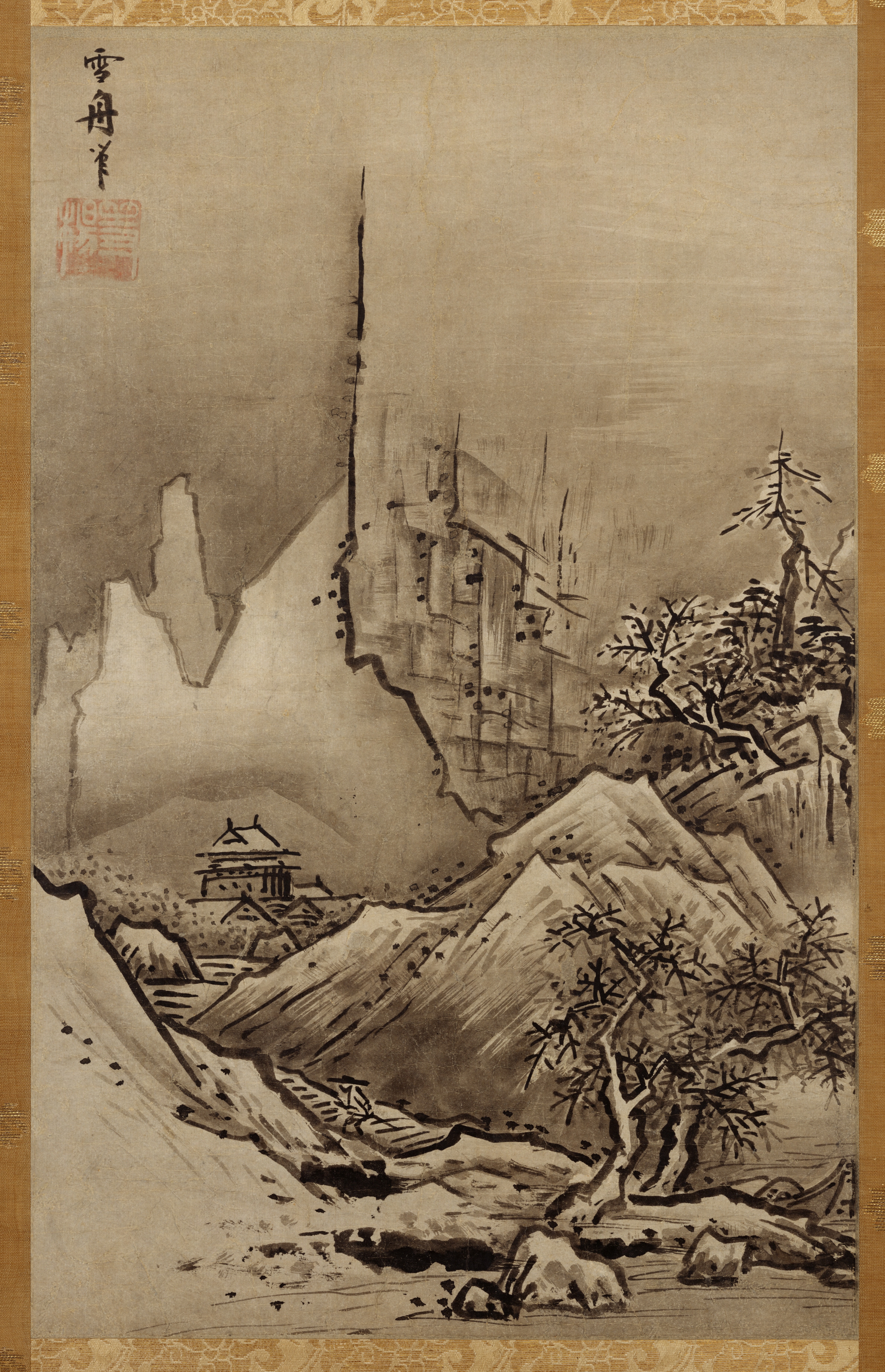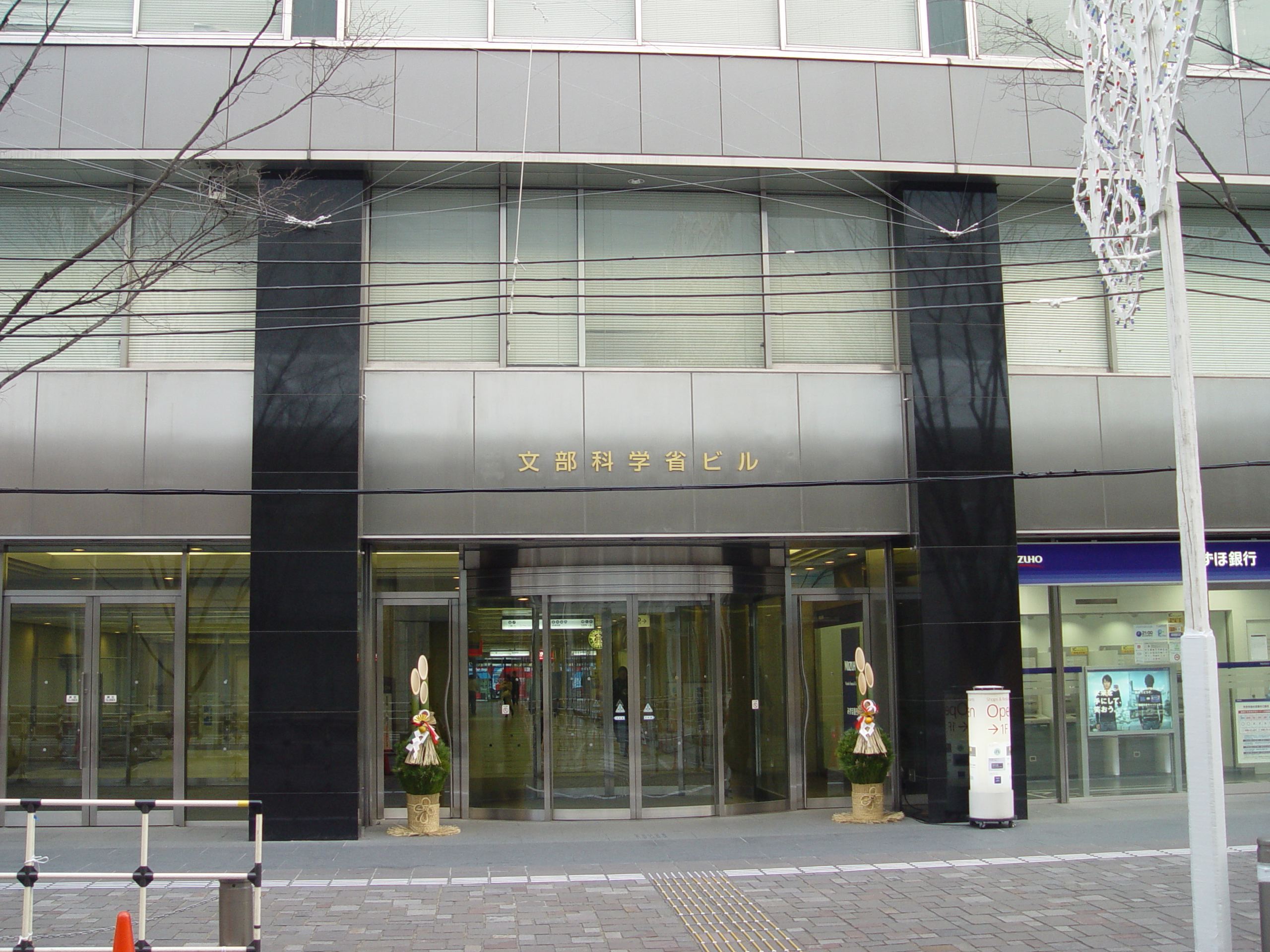|
Autumn And Winter Landscapes
Autumn and Winter Landscapes ( Japanese: 紙本墨画秋冬山水図, Romaji: ''Shihon Bokuga Shūtō Sansuizu'') is a Japanese ink painting created by Sesshū Tōyō, a Zen monk and prominent landscape painter during the Muromachi period. Currently held at the Tokyo National Museum, it is considered a masterpiece of Chinese-style landscape painting, and was designated National Treasure on 31 March 1953. Description In 1468, at the age of 48, Sesshū embarked on a trip to Ming China to study contemporary modes and styles of landscape paintings. Though initially studying under the auspices of Tenshō Shūbun and Josetsu, the expedition and visits to vast regions and cities from Beijing and Ningbo helped expanded and developed the styles that would be utilized in ''Autumn and Winter Landscapes.'' As a Zen monk, Sesshū's expeditions involved observation and contemplation of nature, and thus, the paintings were designed to provoke ambiance of the seasonal landscapes. He modell ... [...More Info...] [...Related Items...] OR: [Wikipedia] [Google] [Baidu] |
Sesshū Tōyō
, also known simply as , was a Japanese Zen monk and painter who is considered a great master of Japanese ink painting. Initially inspired by Chinese landscapes, Sesshū's work holds a distinctively Japanese style that reflects Zen Buddhist aesthetics. His prominent work captured images of landscapes, portraits, and birds and flowers paintings, infused with Zen Buddhist beliefs, flattened perspective, and emphatic lines. Sesshū was born into the samurai and trained at Shōkoku-ji temple in Kyoto, Japan, as a Zen monk. From his early childhood, Sesshū showed a talent for painting and eventually became widely revered throughout Japan as a wise, reputable Zen scholar, and the greatest painter priest of Zen-Shu. Sesshū worked in a painting atelier whilst training under Tenshō Shūbun (c. 1418–1463). But upon visiting China, his work took on a distinctive Chinese influence, merging Japanese and Chinese styles to develop his individualistic style of Zen paintings. Sesshū's ... [...More Info...] [...Related Items...] OR: [Wikipedia] [Google] [Baidu] |
Cultural Affairs Agency
The is a special body of the Japanese Ministry of Education, Culture, Sports, Science and Technology (MEXT). It was set up in 1968 to promote Japanese arts and culture. The agency's budget for FY 2018 rose to ¥107.7 billion. Overview The agency's Cultural Affairs Division disseminates information about the arts within Japan and internationally, and the Cultural Properties Protection Division protects the nation's cultural heritage. The Cultural Affairs Division is concerned with such areas as art and culture promotion, art copyrights, and improvements in the national language. It also supports both national and local arts and cultural festivals, and it funds traveling cultural events in music, theater, dance, art exhibitions, and film-making. Special prizes are offered to encourage young artists and established practitioners, and some grants are given each year to enable them to train abroad. The agency funds national museums of modern art in Kyoto and Tokyo and The Nationa ... [...More Info...] [...Related Items...] OR: [Wikipedia] [Google] [Baidu] |
Paintings In The Tokyo National Museum
Painting is a Visual arts, visual art, which is characterized by the practice of applying paint, pigment, color or other medium to a solid surface (called "matrix" or "Support (art), support"). The medium is commonly applied to the base with a brush. Other implements, such as palette knives, sponges, airbrushes, the artist's fingers, or even a dripping technique that uses gravity may be used. One who produces paintings is called a painter. In art, the term "painting" describes both the act and the result of the action (the final work is called "a painting"). The support for paintings includes such surfaces as walls, paper, canvas, wood, glass, lacquer, pottery, leaf, copper and concrete, and the painting may incorporate other materials, in single or multiple form, including sand, clay, paper, cardboard, newspaper, plaster, gold leaf, and even entire objects. Painting is an important form of visual arts, visual art, bringing in elements such as drawing, Composition (visual art ... [...More Info...] [...Related Items...] OR: [Wikipedia] [Google] [Baidu] |
1470s In Japan
147 may refer to: * 147 (number), a natural number * AD 147, a year of the Julian calendar, in the second century * 147 BC, a year of the pre-Julian Roman calendar * 147 AH, a year in the Islamic calendar that corresponds to 764 – 765 CE Military * BQM-147 Dragon unmanned aerial vehicle, a tactical battlefield UAV operated by the US Marine Corps * Ryan Model 147 Lightning Bug was a drone, or unmanned aerial vehicle during the 1960s * was a United States Navy Admirable-class minesweeper during World War II * was a United States Navy Edsall-class destroyer escort during World War II * was a United States Navy Haskell-class attack transport during World War II * was a United States Navy ''General G. O. Squier''-class transport ship during World War II * was a United States Navy Wickes-class destroyer during World War II * was a United States Navy ''Neosho''-class fleet oiler of the United States Navy during the Six-Day War Science and medicine * 147 Protogeneia, a lar ... [...More Info...] [...Related Items...] OR: [Wikipedia] [Google] [Baidu] |
Japanese Paintings
Japanese may refer to: * Something from or related to Japan, an island country in East Asia * Japanese language, spoken mainly in Japan * Japanese people, the ethnic group that identifies with Japan through ancestry or culture ** Japanese diaspora, Japanese emigrants and their descendants around the world * Japanese citizens, nationals of Japan under Japanese nationality law ** Foreign-born Japanese, naturalized citizens of Japan * Japanese writing system, consisting of kanji and kana * Japanese cuisine, the food and food culture of Japan See also * List of Japanese people * * Japonica (other) * Japanese studies , sometimes known as Japanology in Europe, is a sub-field of area studies or East Asian studies involved in social sciences and humanities research on Japan. It incorporates fields such as the study of Japanese language, history, culture, litera ... {{disambiguation Language and nationality disambiguation pages ... [...More Info...] [...Related Items...] OR: [Wikipedia] [Google] [Baidu] |
Landscape Paintings
A landscape is the visible features of an area of Terrestrial ecoregion, land, its landforms, and how they integrate with Nature, natural or human-made features, often considered in terms of their aesthetic appeal.''New Oxford American Dictionary''. A landscape includes the physical elements of geophysically defined landforms such as mountains, hills, water bodies such as rivers, lakes, ponds and the sea, living elements of land cover including indigenous vegetation, human elements including different forms of land use, buildings, and structures, and transitory elements such as lighting and weather conditions. Combining both their physical origins and the Culture, cultural overlay of human presence, often created over millennia, landscapes reflect a living synthesis of people and place that is vital to local and national identity. The character of a landscape helps define the self-image of the people who inhabit it and a sense of place that differentiates one region from other ... [...More Info...] [...Related Items...] OR: [Wikipedia] [Google] [Baidu] |
National Treasures Of Japan
Some of the National Treasures of Japan A is " Tangible Cultural Properties designated by law in modern Japan as having extremely high value." Specifically, it refers to buildings, arts, and crafts designated as especially valuable from among Important Tangible Cultural Properties, as determined and designated by the Agency for Cultural Affairs (a special body of the Ministry of Education, Culture, Sports, Science and Technology). A Tangible Cultural Property is considered to be of historic or artistic value, classified either as "buildings and structures" or as "fine arts and crafts". Each National Treasure must show outstanding workmanship, a high value for world cultural history, or exceptional value for scholarship. Approximately 20% of the National Treasures are structures such as castles, Buddhist temples, Shinto shrines, or residences. The other 80% are paintings; scrolls; sutras; works of calligraphy; sculptures of wood, bronze, lacquer or stone; crafts such as ... [...More Info...] [...Related Items...] OR: [Wikipedia] [Google] [Baidu] |
Landscape By Sesshū
''Landscape by Sesshū'' is one of the most securely Authenticity in art#Authenticity of provenance, authenticated works of the Japanese Muromachi period artist Sesshū (1420–1506). It is an Suibokuga, ink wash in the private collection of the Ōhara family in Kurashiki, Okayama, Kurashiki, Okayama Prefecture, Japan. The hanging scroll has been Cultural Properties of Japan, designated a National Treasures of Japan, National Treasure. Painting Executed in the or carefully delineated (as opposed to or 'splashed ink') style, the landscape is thought to be one of the artist's final works. The vertical accent of two pine trees takes the place of a central mountain peak, while the distant shore has a "modern" horizon line unusual for the period. The zigzag path leading to a pavilion on a lookout point contributes to the painting's considerable "spatial depth". Journeying along the path are an old wanderer accompanied by a young attendant, recurrent figures in Sesshū's landscapes. ... [...More Info...] [...Related Items...] OR: [Wikipedia] [Google] [Baidu] |
Anti-Comintern Pact
The Anti-Comintern Pact, officially the Agreement against the Communist International was an anti-communist pact concluded between Nazi Germany and the Empire of Japan on 25 November 1936 and was directed against the Communist International (Comintern). It was signed by German ambassador-at-large Joachim von Ribbentrop and Japanese ambassador to Germany Kintomo Mushanokōji. Kingdom of Italy, Italy joined in 1937 (earlier it had signed the Italo-Soviet Pact directed partly against Hitler), but it was legally recognized as an original signatory by the terms of its entry. Francoist Spain, Spain and Hungary joined in 1939. Other countries joined during World War II. The Japanese signatories had hoped that the Anti-Comintern Pact would effectively be an alliance against the Soviet Union, which was how the Soviets perceived it. There was also a secret additional protocol which specified a joint German-Japanese policy specifically aimed against the Soviet Union. After August 1939, Jap ... [...More Info...] [...Related Items...] OR: [Wikipedia] [Google] [Baidu] |
Germany–Japan Relations
Germany–Japan relations (; ) are the current and historical relations between the Federal Republic of Germany and Japan. The diplomatic relations were officially established in 1861 with the first ambassadorial visit to Japan from Prussia (which predated the formation of the German Empire in 1866/1870). Japan modernized rapidly after the Meiji Restoration of 1868, often using German models through intense intellectual and cultural exchange. After Japan aligned itself with Britain in 1902, Germany and Japan became enemies in World War I. Japan declared war on the German Empire in 1914 and seized key German possessions in China and the Pacific. In the 1930s, both countries adopted aggressive militaristic attitudes toward their respective regions. This led to a rapprochement and, eventually, a political and military alliance that included Italy known as the Axis powers. During World War II, however, the alliance was limited by the great distances between the Axis powers; for the ... [...More Info...] [...Related Items...] OR: [Wikipedia] [Google] [Baidu] |






